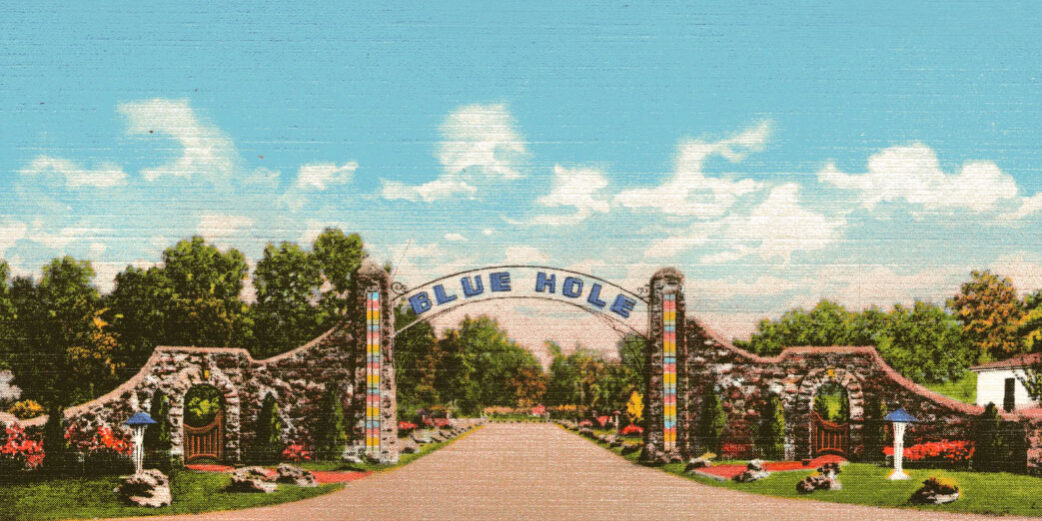By Christine Rae Henry
The Blue hole, touted as one of Ohio’s natural wonders, has always loomed large in my imagination. Located just east of the town of Castalia, only six miles south of the shore of Sandusky Bay on Lake Erie, the Blue Hole was a mixture of sublime beauty and roadside attraction for nearly 75 years.
Postcard (modified), 1935, showing the entrance gate made from the tufa rock that also forms the sides of the Blue Hole.
The reverse side of postcards enticed generations of visitors with descriptions of a pool of crystal clear blue-green water fed by an underground stream, the depth of which was seemingly unknown. However, the magic of the Blue Hole was in the mysterious formations on the sides of the pond that my imagination transformed into glimpses of an underwater world of gods and goddesses, adventure and intrigue, just below the glassy surface.
This story began in the late 1990s when I had a chance to visit northern Ohio on a business trip, a place I had not gone since my grandparent’s generation gave up the snowbird lifestyle and moved permanently to the sunny climes of Florida.
As a child in the 1970s, my family road trips to Ohio were focused mostly on the destination—the backyards of extended family members where we spent lots of humid July afternoons sitting on lawn chairs in the sun, reconnecting with grandparents and cousins while picnicking on various salads, none of which involved anything green. So, road trips were not about the freedom of the open road but instead meant long hours in the back of the Plymouth watching the rows of corn slip by the window.
But on every trip, my brother and I were allowed to choose one destination for a stop, and much to my family’s dismay I always selected the same place, the Blue Hole.
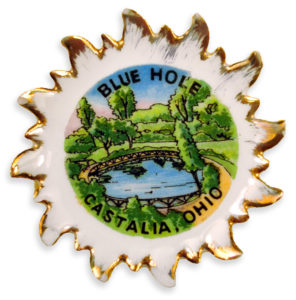
Miniature souvenir plate. Brian Butko collection, all other images from the author.
So, of course, as an adult, I wanted to revisit this special place and see if it was still as mysterious as I remembered. After a cursory search online, which turned up nothing, I asked some Ohio natives if they knew how I could visit the mythic Blue Hole. While most were unfamiliar with the site, one friend gave the most surprising answer, “I heard they moved it” which of course was an even bigger mystery than the Blue Hole. I couldn’t imagine how in the world you could move a hole and thus began my quest to unravel the mystery of this roadside attraction that in its heyday convinced 120,000 people a year to gaze into a lifeless pool of water.
In my journey to find what had happened to the Blue Hole, I began digging into the history, and it was a much more intriguing story then I had imagined.
The first written references to this area came from the early 19th century when European settlers built a village on the banks of Cold Creek, a swiftly moving stream fed by a deep artesian aquifer formed by glacial deposits.

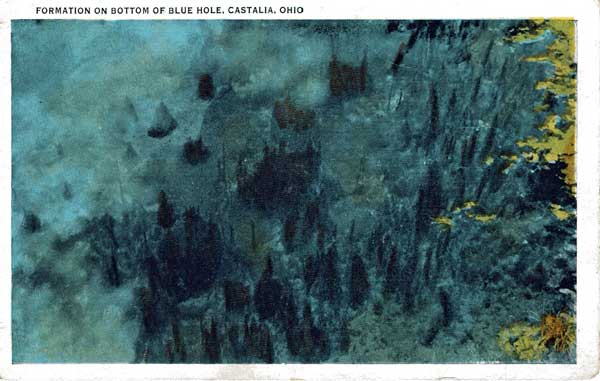
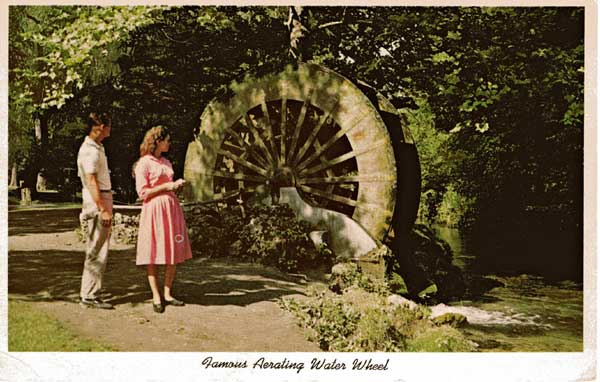
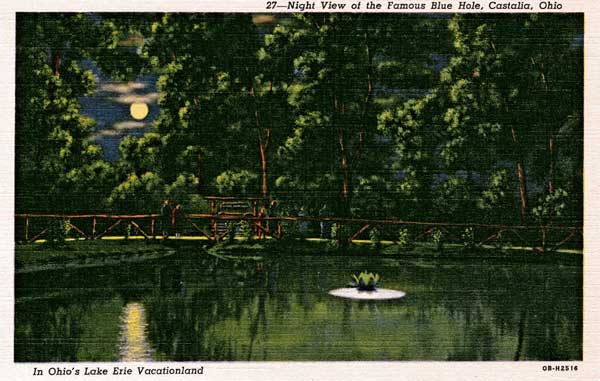
1: 935 postcard showing the rustic bridges around the Blue Hole. 2: Postcard showing the mysterious formations of the Blue Hole. 3: Oversized water wheel at the Blue Hole gift shop. 4: Nighttime viewing was enabled by a floating lily pad that supported electric lights.
Christine Henry is a professor of Historic Preservation at the University of Mary Washington where she teaches a new generation of students to not only document and preserve buildings from all eras, but also to enjoy the adventures of the open road along the way.
There’s more! To read the rest of this article, members are invited to log in. Not a member? We invite you to join. This article originally appeared in theSCA Journal, Spring 2018, Vol. 36, No. 1. The SCA Journal is a semi-annual publication and a member benefit of the Society for Commercial Archeology.
More Articles Join the SCA


